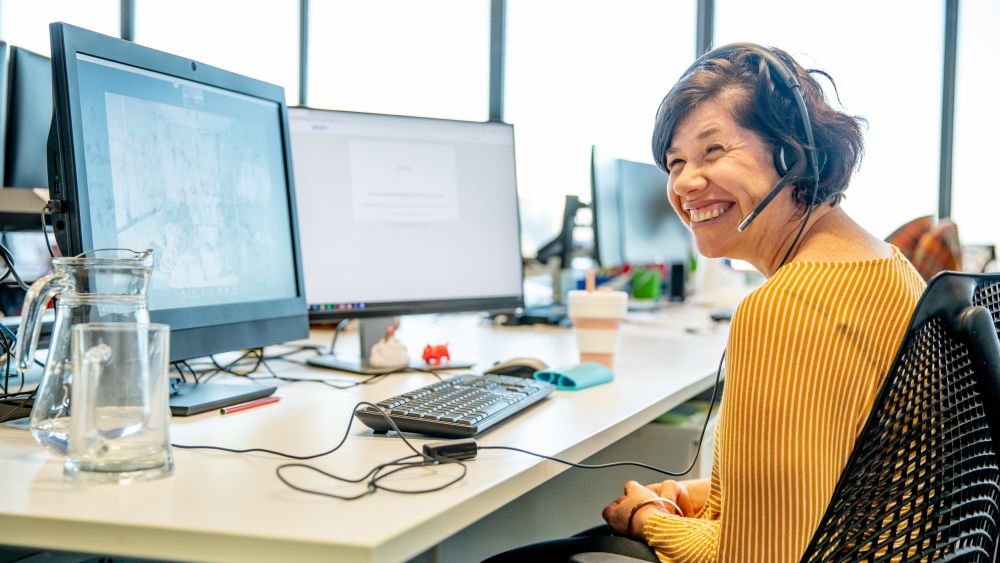Until 2020, working from home was usually viewed as distraction-prone and unproductive, but as the pandemic forced people to stay home, everything changed. The Pew Research Center found 62% of American workers with a bachelor’s degree or more education say their work can be done from home. Similarly, the United States Census Bureau found more than a third of U.S. households reported working from home more frequently than before the pandemic. In fact, working from home can now be argued to be a better working style to make the most of your employees, especially those who are disabled. As someone who falls into this category, working from home has been a positive step for me, enabling greater accessibility that I wouldn’t have otherwise.
I completed a short stint at a local paper while enrolled as a university student in 2019. To get to the office I had to catch two buses, and the commute took an hour each way. As someone whose condition makes her extremely tired after physical exertion, I'd come to work sleepy and unfocused, and I’m sure I failed to do my best work under these circumstances.
I graduated in 2021, and since offices shut down to contain the spread of COVID-19, I found remote freelance work — the commuting difficulties I once faced immediately vanished. I was worried about my working setup when I was diagnosed with antiphospholipid syndrome, but since offices closed, I had no choice but to work from home. I had never even considered it an option before the pandemic. I now had an accessible alternative, and it was freeing — I feel more at ease in my own space and confident and more productive.
Disabled people make up 15% of the global population, meaning greater accessibility can improve millions of lives of the 1.3 billion people who identify as disabled. Remote working is an accessible option for these people, and the greater population.
Sarah Rose, a journalist from Belfast has Endometriosis, Adenomyosis and Crohn's Disease and says that she could never work from home full time in the e-commerce sector. "I requested it in previous jobs but found working from home even with a declared disability was very hard to access,” she told The Org.
The pandemic changed things for the better for Rose, however. "It was like suddenly overnight working from home was accessible,” she said. “Prior to the pandemic, I was always exhausted and overwhelmed; I was always worried about work. How would I manage the exhausting commute and perform in pain? I always felt like I was running on empty."
Rose recalls feeling "exhausted" when she arrived at work, but she feels capable of working from home now that she can manage her fatigue and pain alongside her career. She adds that working from an office would be unmanageable, especially since working from home has opened doors for her career. "It has given me more opportunities as I'm able to work,” she said. “Without being able to work from home or with a flexible model, I would not be able to commit to full-time employment."
This presents just one instance that demonstrates working from home can produce better workers and should be kept for the future.
Keryn Seal from Devon works in sales for a SaaS startup. He says working from home has given him back more energy. Seal is completely blind and has been since the age of 20. Now 39, he feels the pandemic has made the workplace more approachable to disabled people purely by accident. "Everything became more remote and online focussed because a predominantly non-disabled workforce required it to be that way to remain productive,” he told The Org.
He adds that these changes gave "disabled people the things they've been asking for over the past decade." The difficulties that in-person working presented to Keryn were vast, including the lack of flexibility given to him to account for his disability.
The former athlete adds that working from home was commonplace in his athletic endeavors. Still, when his career changed, he felt "constant scrutiny" on where his time was spent and "borderline micromanagement." This feeling of being observed closely stemmed from the nature of Seal’s workplace. “I had to justify my daily activities and was questioned why I said certain things to clients in an email.” These seemingly small things became draining for Seal, and led him to ultimately feel micromanaged.
Disability advocate Nana Marfo works with those who have special educational needs and is the director of Unique Abilities. He gives an alternative view to COVID-19's effect on disabled people: "The pandemic has highlighted the issue employers have regarding recruiting disabled people,” he told The Org. “It is at an all-time low due to companies thinking of liability insurance and how effective disabled people can be as an employee." According to the Bureau of Labor Statistics in 2020, 17.9 percent of people with a disability were employed, down from 19.3 percent in 2019 in the U.S. For people without a disability, 61.8 percent were employed in 2020, down from 66.3 percent in the prior year, showing Marfo’s trend.
Felicia Nurmsen, Managing Director of Employer Services at the National Organization on Disability (NOD) told The Org: “People with disabilities have been asking for accommodations but have been denied working from home opportunities.” She adds that she thinks this change was “one of the best things that may have occurred as a part of the pandemic — a silver lining if you will.”
NOD has worked on a Disability Employment Tracker for the past nine years, a free tool that tracks now close to 500 companies specifically to see how they're progressing with their disability inclusion practice. The tracker internally focuses just on the workplace, and employment. Nurmsen said that it has shown progress in disability employment practices, including talent outcomes which measure the progression of disabled people in their careers.
“If we really don't know where our people with disabilities are in the workplace and how we're supporting them, then we really can't say that we have a disability-inclusive culture,” Nurmsen said, highlighting the importance of the tracker.
She adds that workplaces are moving in the right direction regarding inclusivity. The employment tracker contrastingly shows a significant increase in new hires of people with disabilities as well as the number of people that are unemployed with disabilities is decreasing.
According to the 2021 NOD Employment Tracker report, employers demonstrated self-identification rates three times higher than those that only examined self-ID.
It is clear the workforce was always adaptable, though it took a pandemic to afford the opportunity to people with disabilities. This is sadly indicative of how society values the contributions of people like me.


